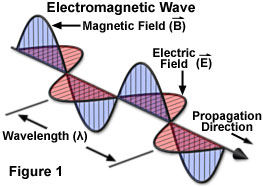20 April 2011
Novel solar cells utilize light's magnetic properties
by Kate Melville
 Light has electric and magnetic components but scientists had always believed the effects of the magnetic field to be insignificant. Now, however, University of Michigan researchers have found that under the right circumstances, light can generate magnetic effects that are 100 million times stronger than previously expected, making magnetic solar cells a possibility.
Light has electric and magnetic components but scientists had always believed the effects of the magnetic field to be insignificant. Now, however, University of Michigan researchers have found that under the right circumstances, light can generate magnetic effects that are 100 million times stronger than previously expected, making magnetic solar cells a possibility.
"You could stare at the equations of motion all day and you will not see this possibility. We've all been taught that this doesn't happen," said Stephen Rand, who reports on the effect in the Journal of Applied Physics. "It's a very odd interaction. That's why it's been overlooked for more than 100 years."
What creates the effect is a previously undetected type of "optical rectification." In traditional optical rectification, light's electric field causes a charge separation, or a pulling apart of the positive and negative charges in a material. This sets up a voltage, similar to that in a battery. This electric effect had previously been detected only in crystalline materials that possessed a certain symmetry, such as those used in common silicon solar cells.
But Rand and co-researcher William Fisher found that under the right circumstances and in other types of materials, the light's magnetic field can also create optical rectification. "It turns out that the magnetic field starts curving the electrons into a C-shape and they move forward a little each time," Fisher explained. "That C-shape of charge motion generates both an electric dipole and a magnetic dipole. If we can set up many of these in a row in a long fiber, we can make a huge voltage and by extracting that voltage, we can use it as a power source."
Currently, the light must be focused to an intensity of 10 million watts per square centimeter. Sunlight isn't this intense on its own, but new materials are being sought that would work at lower intensities.
The discovery could lead to a new kind of solar cell without semiconductor material and without absorption to produce charge separation. In traditional solar cells, the light goes into a material, gets absorbed and creates heat but a magnetic solar cell would have a very low heat load. Instead of the light being absorbed, energy would be stored in the magnetic moment.
Solar power produced this way could be cheaper, the researchers say. They predict that with improved materials they could achieve 10 percent efficiency in converting solar power to useable energy - equivalent to today's commercial-grade solar cells.
Related:
Artificial leaf generates electricity
MIT scientists create self-assembling solar cell
Electricity generated directly from photosynthesis
Source: University of Michigan
